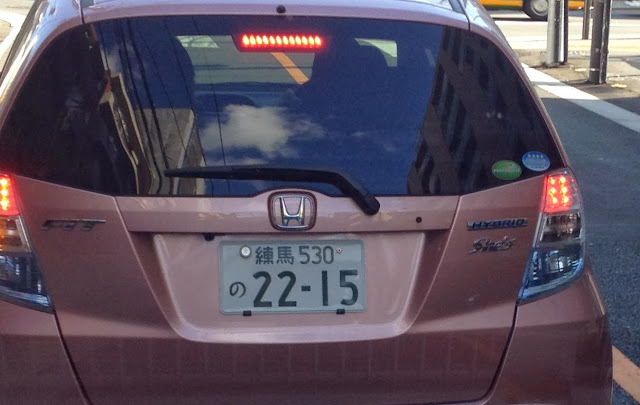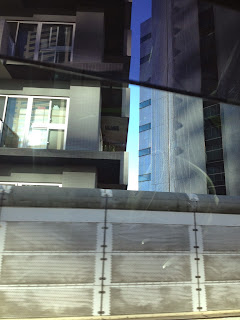1. The navi speaks Japanese. Okay, it speaks English too, but we have to program it using only Japanese, so it has taken some time to learn, but it accepts phone numbers as a destination! Do navigators in America do that?! It also tells me where there are traffic jams, which seem to happen a lot, because…
2. There are usually only two lanes on the freeway and no shoulder! And…
3. We not only drive on the left (wrong) side of the road, but the driver drives from what we know as the passenger side. Okay, this isn't news for anybody, but it sure is hard to make that switch in your head and to recalibrate. Scott spent the whole drive as a passenger uncomfortably leaning to the right, which signaled to me I was too close on the left. I thought I was as far right as I could go. There is no wiggle room.
4. Our van is ultra skinny as are most other cars and trucks on the road…thank Heavens!
5. Bikers have either no rules, or they don't follow the rules outlined for them. Honestly, they scare me to death. On the freeway, they go in the middle of lanes, they weave, they go on the non-shoulder which looks to be about six inches. On surface roads, they creep up to the side of you as you are making a left turn (from the far left lane--remember, we are opposite here) and about scare you to death as roads are so narrow in the first place. There is no second place.
6. The road signs in Tokyo are in Japanese AND English, whew!
7. Oftentimes there are surface roads under the freeways and the navi doesn't know that and cannot fix its directions until you pull away from such a road.
Other observations:
They have great names for their cars. Case in point below. Look to the right of the license plate under "Hybrid". What? She's what? I could understand if it was "Hers". Our van is an El Grande--heh, heh.
There is this cool little sensor on our van which beeps when objects are too close, which happens quite often. A person can walk by, a bike ride by and touch it off. It comes in handy when it is time to park as more often than not you are expected to back in. See the little blue light on the left just above the dashboard? It retracts completely when parked.
Speaking of parking, there are always one or two attendants to help you back in as the parking spaces are as narrow as the roads, in relative terms. Great job, parking, dear husband. Don't even get me started on our driveway (narrow, yes, and steep) and we do have to back in.
We drove once for almost twenty minutes before we felt like we were out of the city proper--it is that huge! It is after all the biggest city in the world, which makes a navi essential. As long as I see three different landmarks, I know I am close to home and I know I can figure it out without help--Tokyo tower, Mori tower and this building in Shinjuku which looks like it is the Empire State building, Asian style (bottom picture).
Imagine living this close to the freeway! There are apartment buildings within yards, or should I say meters of the guardrail, and remember, there is no shoulder to speak of.
Getting a license was a month-long odyssey in itself. We had to take a whole day filling out papers, taking a written test…wait, I am whining. Anyway, I passed the driving test on the first try..only because the foreigner testing before me did such a bad job. I think the tester just wanted to feel accomplished for the day. Anyhow, we are free to go anywhere and Tokyo looks a lot different from the road than it does from the subway. We love it here!




























































